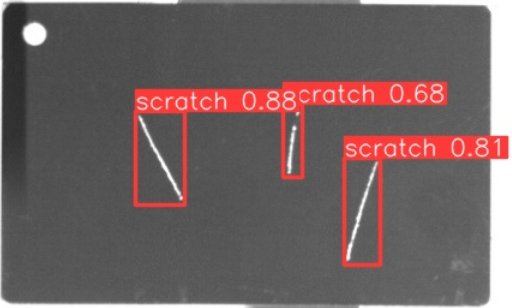AWS Machine Learning Blog
Category: AWS IoT Greengrass
Build an end-to-end MLOps pipeline for visual quality inspection at the edge – Part 1
A successful deployment of a machine learning (ML) model in a production environment heavily relies on an end-to-end ML pipeline. Although developing such a pipeline can be challenging, it becomes even more complex when dealing with an edge ML use case. Machine learning at the edge is a concept that brings the capability of running […]
Build an end-to-end MLOps pipeline for visual quality inspection at the edge – Part 2
In Part 1 of this series, we drafted an architecture for an end-to-end MLOps pipeline for a visual quality inspection use case at the edge. It is architected to automate the entire machine learning (ML) process, from data labeling to model training and deployment at the edge. The focus on managed and serverless services reduces […]
Build an end-to-end MLOps pipeline for visual quality inspection at the edge – Part 3
This is Part 3 of our series where we design and implement an MLOps pipeline for visual quality inspection at the edge. In this post, we focus on how to automate the edge deployment part of the end-to-end MLOps pipeline. We show you how to use AWS IoT Greengrass to manage model inference at the […]
MLOps at the edge with Amazon SageMaker Edge Manager and AWS IoT Greengrass
October 2023: Starting in April 26th, 2024, you can no longer access Amazon SageMaker Edge Manager. For more information about continuing to deploy your models to edge devices, see SageMaker Edge Manager end of life. Internet of Things (IoT) has enabled customers in multiple industries, such as manufacturing, automotive, and energy, to monitor and control […]
Identify the location of anomalies using Amazon Lookout for Vision at the edge without using a GPU
Automated defect detection using computer vision helps improve quality and lower the cost of inspection. Defect detection involves identifying the presence of a defect, classifying types of defects, and identifying where the defects are located. Many manufacturing processes require detection at a low latency, with limited compute resources, and with limited connectivity. Amazon Lookout for […]
Amazon Lookout for Vision now supports visual inspection of product defects at the edge
Discrete and continuous manufacturing lines generate a high volume of products at low latency, ranging from milliseconds to a few seconds. To identify defects at the same throughput of production, camera streams of images must be processed at low latency. Additionally, factories may have low network bandwidth or intermittent cloud connectivity. In such scenarios, you […]
Build machine learning at the edge applications using Amazon SageMaker Edge Manager and AWS IoT Greengrass V2
Running machine learning (ML) models at the edge can be a powerful enhancement for Internet of Things (IoT) solutions that must perform inference without a constant connection back to the cloud. Although there are numerous ways to train ML models for countless applications, effectively optimizing and deploying these models for IoT devices can present many […]
Run ML inference on AWS Snowball Edge with Amazon SageMaker Edge Manager and AWS IoT Greengrass
You can use AWS Snowball Edge devices in locations like cruise ships, oil rigs, and factory floors with limited to no network connectivity for a wide range of machine learning (ML) applications such as surveillance, facial recognition, and industrial inspection. However, given the remote and disconnected nature of these devices, deploying and managing ML models […]
Building a trash sorter with AWS DeepLens
April 2023 Update: Starting January 31, 2024, you will no longer be able to access AWS DeepLens through the AWS management console, manage DeepLens devices, or access any projects you have created. To learn more, refer to these frequently asked questions about AWS DeepLens end of life. In this blog post, we show you how to […]
Parallelizing across multiple CPU/GPUs to speed up deep learning inference at the edge
AWS customers often choose to run machine learning (ML) inferences at the edge to minimize latency. In many of these situations, ML predictions must be run on a large number of inputs independently. For example, running an object detection model on each frame of a video. In these cases, parallelizing ML inferences across all available CPU/GPUs […]









